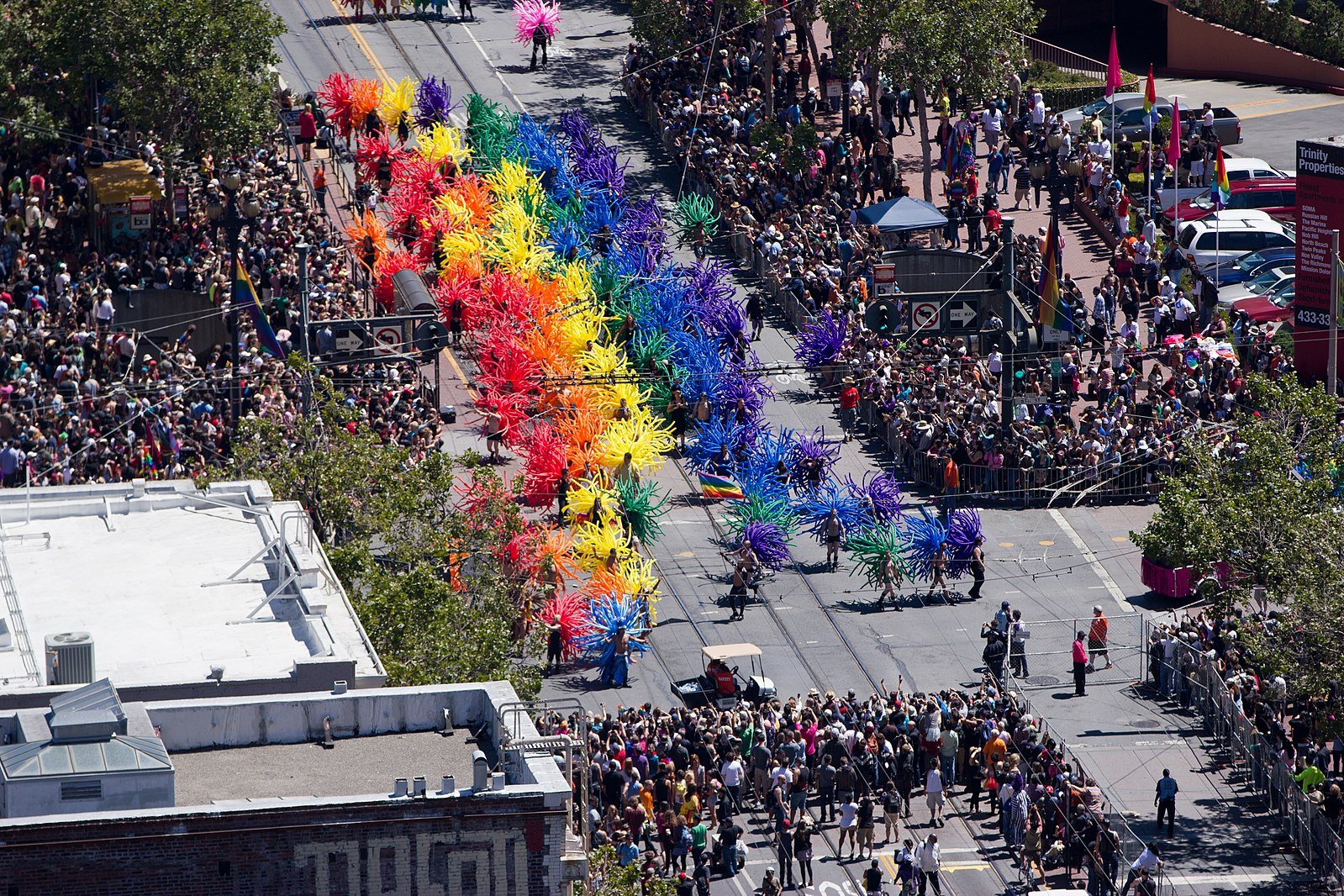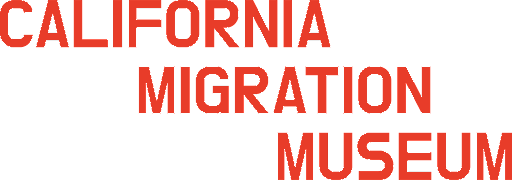
Castro: Lesson 3
In the Navy: LBGTQ+ Representation and Activism
Topic
LBGTQ+ Representation
1. Understand ways in which the LBGTQ+ community reframed mainstream artistic spaces
2. Learn about how the Castro provided space for the development of queer culture
3. Explore LBGTQ+ resistance and activism through culture
Objectives
U.S. History
On level through Advanced Placement and the International Baccalaureate, AP American Government and Politics, Civics
Grade
Essential Question
Why does representation matter and how can occupied spaces be reframed through resistance and acceptance?
Overview
The basis of this lesson relates to information found in Scene 1: At Home in the Castro, Scene 2: Welcome to Eureka Valley, Scene 3: Landing in the Castro - 1957, Scene 4: The Salon, Scene 5: Harvey's Castro, Scene 6: Belonging Here, Scene 7: The March to Yosemite, Scene 8: The Legacy from "At Home in the Castro" the CMM Castro Walk. This lesson plan asks students to consider why representation matters and how spaces can be reframed with coexistence and agency.
When the movie "Black Panther" was released, much talk surrounded the importance of representation on the big screen with White characters only appearing in small supporting roles. One scene resonated particularly in African movie theaters, where some audiences stood and cheered as the antihero killed a museum curator taking back artifacts which in fact were important Wakandan cultural pieces. This scene reframed museum spaces for an African audience creating agency and resistance where very little exists. In 1979 the iconic LGBTQ+ music group the Village People released a cheeky song called "In the Navy". With the release of "Y.M.C.A” the Village People gained mainstream success taking queer culture into the disco era but nonetheless when the U.S. Navy reached out about a working relationship it was surprising.
The release of the video placed the Village People on a U.S. Navy frigate, the U.S.S. Reasoner, wearing their well-known costumes and dancing in front of actual U.S. Sailors in their dress blues. While the Navy ultimately never used footage, the video was released for the public reframing a macho space into a shared space including queer culture. Representation matters and in the modern era artistic space remains an important and somewhat mailable arena for mainstream exposure, resistance, and potential acceptance.
Materials
Students will need markers, poster paper, pens; or the poster can be created digitally so students will need a device and access to wi-fi.
Key Ideas
1960s Liberalism, Media and American Culture, Government Powers and Individual Rights, Queer Culture, Representation
Assessment
Students will create images of representation, activism, or resistance.
Lesson (75 Minutes Total):
-
As a class watch the museum scene from "The Black Panther". Ask students to consider the message of the scene before they watch. After watching have students use the worksheet to analyze how this scene could be viewed from different viewpoints: a person from Africa, a person from England, an African American person, and an Anglo-American person. Give students a few minutes to share perspectives.
Use this opening activity to help students think outside of their box, and the perspectives of space, bias, and representation.
-
15 minutes
Begin by having the class watch the music video for Y.M.C.A.'s "In the Navy" from 1979.
As a class or in small groups ask students to consider how the music video can be viewed as resistance, activism, and/or acceptance of queer culture.
30 minutes
On the California Migration Museum website have students spend a few minutes reading through "Pride Flags".
Pass out 8 ½ × 11 blank paper, provide markers or ask students to take out their own supplies
Ask students to create a flag which advocates for resistance, activism, or acceptance of a cause/identity they feel strongly about.
-
Gallery Walk of posters allowing students to gain a sense of the spaces their peers occupy.
As students move through the Gallery give them post it notes to write resistance, activism, or acceptance which they should place around the flags. This activity should aid students in noting the different perspectives everyone can take from how others occupy a space, emphasizing why representation matters.
Standards:
Historical and Social Science Analysis Skills (p727-728)
-
Students compare the present with the past, evaluating the consequences of past events and decisions and determining the lessons that were learned.
Students analyze how change happens at different times; understand that some aspects can change while others remain the same; and understand that change is complicated and affects not only technology and politics but also values and beliefs.
Students use a variety of maps and documents to interpret human movement, including major patterns of domestic and international migration, changing environmental preferences and settlement patterns, the frictions that develop between population groups, and the diffusion of ideas, technological innovations, and goods.
Students relate current events to the physical and human characteristics of places and regions.
-
Students identify bias and prejudice in historical interpretations.
Students construct and test hypotheses; collect, evaluate, and employ information for multiple primary and secondary sources; and apply it in oral and written presentations.
-
Students show the connections, casual and otherwise, between particular historical events and larger social, economic, and political trends and developments.
Students recognize the complexity of historical causes and effects, including the limitations on determining cause and effect.
Students interpret past events and issues within the context in which an event unfolded rather than soley in terms of present day norms and values.
Students understand the meaning, implication. and impact of historical events and recognize that events could have taken other directions.
Students analyze human modifications of landscapes and examine the resulting environmental policy issues.
-
11.8 Students analyze the economic boom and social transformation of post World War II America
4. Analyze new federal government spending on defense, welfare, interest on the national debt, and federal and state spending on education, including the California Master Plan.
7. Describe the effects on society and the economy of technological developments since 1915, including the computer revolution, changes in communication, advances in medicine, and improvements in agricultural technology.
8. Discuss forms of popular culture, with emphasis on their origins and geographic diffusion (e.g. jazz and other forms of popular music, professional sports, architectural and artistic styles).
11.11 Students analyze the major social problems and domestic policy issues in contemporary American society.
Explain how the federal, state, and local governments have responded to demographic and social changes such as population shifts to the suburbs, racial concentrations in the cities, Frostbelt-to-Sunbelt migration, international migration, decline of family farms, increases in out-of-wedlock- births, and drug use.
-
12.1 Students explain the fundamental principles and moral values of American democracy as expressed in the U.S. Constitution and other essential documents of American democracy.
2. Discuss the character of American democracy and its promise and perils as articulated by Alexis de Tocqueville.
3. Explain how the U.S. Constitution reflects a balance between the classical republican concern with promotion of the public good and the classical liberal concern with protecting individual rights; and discuss how the basic premises of liberal concern with protecting individual rights; and discuss how the basic premises of liberal constitutionalism and democracy are joined in the Declaration of Independence as "self-evident truths."
4. Understand that the Bill of Rights limits the powers of the federal government and state governments.
12.2 Students evaluate and take and defend positions on the scope and limits of rights and obligations as democratic citizens, the relationships among them, and how they are secured.
1. Discuss the meaning and importance of each of the rights guaranteed under the Bill of Rights and how each is secured (e.g., freedom of religion, speech, press, assembly, petition, privacy).
3. Discuss the individual's legal obligations to obey the law, serve as a juror, and pay taxes.
4. Understand the obligations of civic-mindness, including voting, being informed on civic issues, volunteering and performing public service, and serving in the military or alternative service.
5. Describe the reciprocity between rights and obligations; that is, why enjoyment o one's rights entails respect for the rights of others.
12.3 Students evaluate and take and defend positions on what the fundamental values and principles of civil society are (i.e., the autonomous sphere of voluntary personal, social. and economic relations that are not part of government), their interdependence, and the meaning and importance of those values and principles for a free society.
1. Explain how civil society provides opportunities for individuals to associate for social culture, religious, economic, and political purposes.
1. Explain how civil society makes it possible for people, individually or in association with others, to bring their influence to bear on government in ways other than voting and elections.
2. Compare the relationship of government and civil society in constitutional democracies to the relationship of government and civil society in authoritarian and totalitarian regimes.
12.5 Students summarize landmark U.S. Supreme Court Interpretations of the Constitution and its amendments.
1. Understand the changing interpretations of the Bill of Rights over time, including interpretations of the basic freedoms religion, speech, press. petition, and assembly) articulated in the First Amendment and the due process and equal-protection-of-the-law clauses of the fourteenth amendment.
12.8 Students evaluate and take and defend positions on the influence o the media on American political lifeе.
1. Discuss the meaning and importance of a free and responsible press.
2. Describe the roles of broadcast, print, and electronic media, including the Internet, as means of communication in American politics.
3. Explain how public officials use the media to communicate with the citizenry and to shape public opinion.
12.10 Students formulate questions about and defend their analyses of tensions within our constitutional democracy and the importance to maintaining a balance between the following concepts: majority rule and individual rights; liberty and equality; state and national authority in a federal system: civil disobedience and the rule to law: freedom of the press and the right to a fair trial; the relationship of religion and government.


